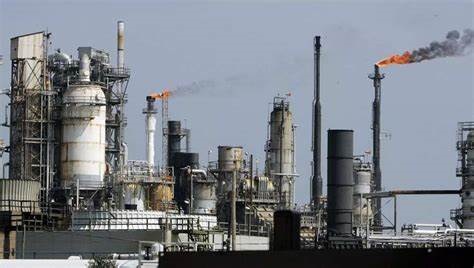The global energy landscape continues to evolve, and projections for crude oil prices in 2024 and 2025 suggest a nuanced picture of market dynamics. Analysts anticipate that average annual prices will remain relatively stable, mirroring the 2023 averages. Here’s a closer look at the forecast and factors influencing the trajectory.
Average Prices for 2024-2025: forecasts indicate that the average Brent crude oil price will hover around $82 per barrel (b) in 2024 and $79/b in 2025, maintaining proximity to the 2023 average of $82/b. A similar trend is expected for West Texas Intermediate (WTI), with a slightly lower trajectory.
First Quarter of 2024 (1Q24): anticipated OPEC+ production cuts are poised to drive crude oil prices upward in the first quarter of 2024. Projections suggest global stock draws of 810,000 barrels per day (b/d) during this period. As a consequence, the price of Brent is expected to climb from $78/b in December 2023 to $85/b in March 2024.
Subsequent Months and 2025 Outlook: following the first quarter, a gradual decrease in crude oil prices is forecasted from April 2024 onward. This shift is attributed to global production outpacing consumption, resulting in minor stock builds. Analysts project an increase of 110,000 b/d in stocks from 2Q24 through 4Q24, with a further uptick of 280,000 b/d expected in 2025.
Market Dynamics: the overall projection hinges on the delicate balance between global supply and demand for petroleum liquids. Analysts foresee relative equilibrium over the next two years, contributing to the stability in average annual prices. Ongoing monitoring of OPEC+ decisions, geopolitical events, and economic indicators will be crucial for accurate assessments.
As with any market forecast, uncertainties persist, and external factors can introduce unforeseen variables. Staying attuned to real-time data and market analyses will be essential for businesses and investors navigating the dynamic crude oil landscape in the coming years.
Several major historical hikes in brent crude oil price have occurred over the years, often driven by geopolitical events, economic factors, or disruptions to the oil supply. Here are some notable instances:
- 1973 Oil Crisis:
- Triggered by the Arab members of the Organization of Arab Petroleum Exporting Countries (OAPEC) imposing an oil embargo.
- Prices quadrupled, leading to a significant economic impact on oil-importing countries.
- 1979 Oil Crisis:
- Resulted from the Iranian Revolution and the subsequent Iran-Iraq War.
- Oil prices surged, and the crisis contributed to global economic challenges.
- 1990 Gulf War:
- Iraq’s invasion of Kuwait led to the Gulf War.
- Oil prices spiked due to concerns about supply disruptions in the region.
- 1999-2000:
- Prices dropped to historic lows in the late 1990s due to oversupply.
- OPEC implemented production cuts to stabilize prices.
- 2008 Financial Crisis:
- High demand and financial speculation contributed to soaring oil prices.
- Prices reached unprecedented levels before plummeting during the financial crisis.
- Arab Spring (2010-2011):
- Political unrest in the Middle East and North Africa affected oil-producing nations.
- Concerns about supply disruptions led to a spike in oil prices.
- 2014-2016:
- Oversupply and geopolitical factors contributed to a significant drop in oil prices.
- OPEC’s decision not to cut production intensified the decline.
- COVID-19 Pandemic (2020):
- Demand plummeted due to lockdowns, leading to a historic collapse in oil prices.
- OPEC+ implemented production cuts to stabilize the market.
These events showcase the sensitivity of oil prices to geopolitical tensions, conflicts, economic conditions, and global events. Keep in mind that the energy market is dynamic, and various factors can influence price movements. For the latest and most accurate information, refer to real-time data and market analyses from reputable sources.










































































